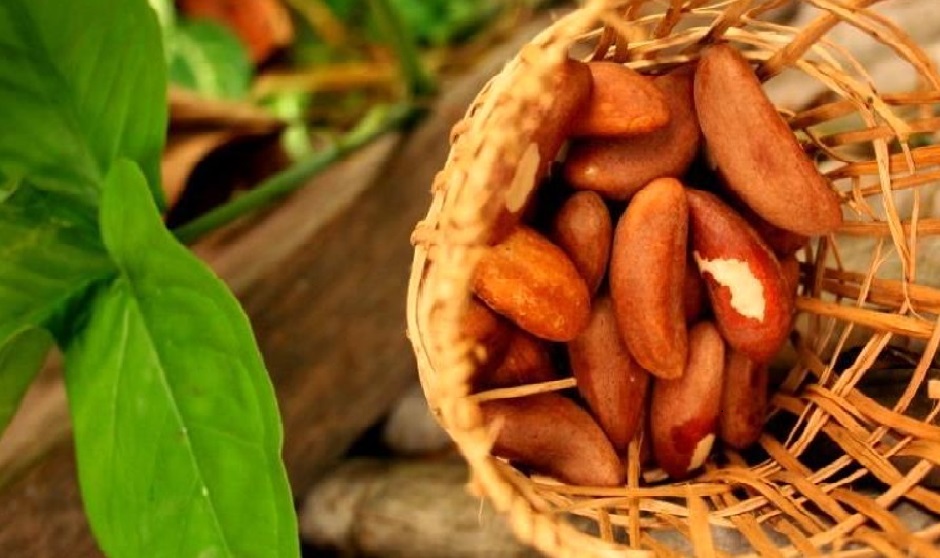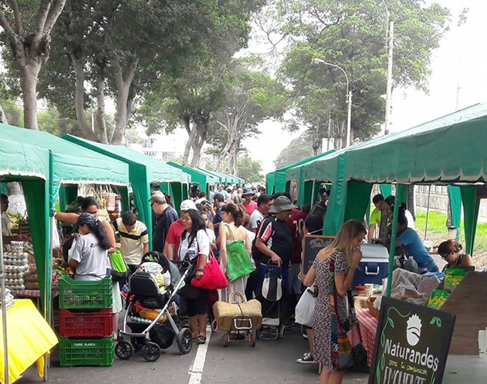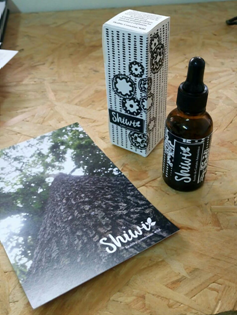The Amazonian alternative to argan oil that keeps forests standing, and communities earning
By Agustín Nervi
“It is gentle on the skin and hair, and its varied uses make it very similar to argan oil, though a lot less pricey” says a 25-year old European woman that recently discovered Brazil nut oil in a hipster market in the Barranco district of Peru´s capital city, Lima. And she likes the fact that it does good as well: cosmetic oil is a way of adding value to Brazil nuts, that can be thought of as the ‘cornerstone of Amazon conservation’ because of the economic incentives that its sustainable extraction can provide for local communities to keep deforestation at bay.
Brazil nuts (Bertholletia excelsa) have long been seen primarily as food product, used mostly as is or in nut mixes, and now making their way into protein bars and granolas. Brazil nuts are also rich in oils, with a high proportion of unsaturated fatty acids (76%), comparable to that of olive oil (83%). Several brands of Brazil nut oil are in the market, as an ingredient for salads, sandwiches or pasta, though its price point after making the long journey from ancient rainforest trees to market, tends to make it hard to compete with other oils like olive or avocado.
To capture more value for local communities and their rainforest home, Brazil nut producers are looking for alternative uses where other product attributes could be conveyed and more consumers would be able to enjoy its benefits, including moisturizing, antioxidant and healing properties. Shiwi, a Peruvian startup Canopy Bridge has been supporting, is developing a marketing strategy for cold-pressed Brazil nut oil for cosmetic use, both as an input for products such as natural soap or body balms, and as a pure, branded product for skin and hair, which will be ready to hit local markets in 2018.
Barranco local market – Lima, Peru (source: allevents.in)
Making it happen on the market shelves: from Peru to the world
As part of a global movement towards the use of organic cosmetics rather than heavily processed ones, and coupled with an increase in the consumption of natural, sustainable and ethically sourced products, Brazil nut oil has a natural opportunity. In 2015, a global survey of 30,000 participants prepared for Nielsen´s Global Corporate Sustainability Report indicated that 57% of consumers considered the presence of natural or organic ingredients as a key factor for their purchasing decisions.
A market report by Shiwi signals that independent cosmetic brands with high segmentation in their product lines are changing the market, forcing multinational companies to innovate. These larger companies such as Brazil’s Natura, Kativa Argan Oil or L’Oreal are now offering “masstige” (a new brand category concept that blends “mass” with “prestige”) products that are sold in supermarkets and pharmacy stores at relatively low prices because of the economies of scale that these companies can achieve in their processing capacities.
In spite of this, Brazil nut oil still hasn’t gotten a lot of traction with large cosmetic brands. To begin with, Brazil nut oil has only stepped into the market very recently. It was previously used in local communities to cook, for lubrication and for lighting lamps. Only a few organizations have invested in processing facilities, R&D and quality control, typically because of the risks involved and weak links in Brazil nut´s value chain. Closer relationships in the form of strategic alliances or robust contracts between processors/exporters and producer associations may provide more solid ground for Brazil nut oil to take off.
In Peru’s national market there seems to be no shortage of potential demand for this oil’s cosmetic use. A study by Universidad del Pacífico notes that female executives spend at least 15% of their income on beauty and wellbeing. The report “Consumer Lifestyles in Peru” by Euromonitor International indicates that product sales of the category “skin care” reached USD 329M in 2016, and it is forecast that combined subcategories “body care” and “facial care” will reach USD 331M in 2021.
It used to be that for sustainable rainforest products companies and promoters were looking immediately to export, but as the success of brands like Brazil’s Natura (which acquired The Body Shop in 2017), there is plenty of growth potential, especially for startups, close to home. Niche cosmetics can thrive in local neighborhood markets where they can almost always be tried first, and where “masstige” products are less likely to be found. Despite the relative disadvantage that small cosmetic companies face, as millennials become mature consumers and continue to care about the origin and impact of the products they buy, there will be outlets where small-scale ventures such as Shiwi´s Brazil nut oil can be showcased with the conservation benefits they carry.
Shiwi´s Brazil nut oil retail presentation, to be launched in 2018
Consumer insights and reactions in the Peruvian market
Cosmetic Brazil nut oil is rich in mono- and polyunsaturated fatty acids, selenium and magnesium, providing antioxidant effects which help to moisturize the skin. Shiwi ran a small-scale dermatological trial with its Brazil nut oil, and found 16 out of the 20 participants “completely agreed” they had seen improvements in hair shininess after 2 weeks of use, while 19 of them expressed their willingness to buy and even recommend the product.
In a survey conducted by Shiwi in Lima, Cusco and Arequipa, asking 222 consumers what kind of natural cosmetic oils they used, argan (50%) and almond oil (35%), with a history of marketing behind them, were most often named. Brazil nut oil followed, with 13% of respondents. About half of the people interviewed indicated pricing as the most important factor in their purchasing decision, while 57% of interviewees considered the product being categorized as “natural or organic” equally important. Natural cosmetic oils were found to be used mostly for hair care (73%), either to improve shine or strengthen after washing, followed by facial care for moisturizing or removing makeup, and skin care, also with moisturizing purposes or for body massages. Almost 80% of respondents could not recall which brand they had used, so there is definitely an opportunity to build brand recognition. Furthermore, most of the people interviewed were interested in knowing more about the properties and uses through Facebook and other social media networks, showing a ‘gap to fill’ for customer engagement.
Perhaps one of the most interesting findings: over half of the interviewees said they would be willing to pay a price premium for the conservation of the Amazon rainforest. It’s encouraging to see that Brazil nut oil´s value, as perceived by consumers, can be more than skin-deep.
Check out other producers of sustainable essential oils in our database, which include: Fundación Chankuap, Cooperativa dos Agricultores do Vale do Amanhecer, Camino Verde, Asociación el Bosque del Futuro Ojos de Agua, Samuria, Candela, Atina
Recommended reading:
Still Standing: Revisiting the ‘cornerstone of Amazon conservation’
5 Amazonian oil producers that taught me how to appreciate oils
Chankuap Foundation: A Cosmetics Factory In The Amazon Forest
Peru’s Amarakaeri People Learn To Have Their Nuts And Sell Them, Too
Innovating Brazil nuts: a business with roots in the rainforest




